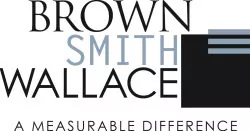As the dust continues to settle on the failed repeal and replacement of the Affordable Care Act (ACA), the surrounding health care benefits landscape remains largely unchanged. Employers face a variety of familiar questions regarding compliance and are still wondering whether rumors of bipartisan cooperation for a solution will ever come to pass.
Contemplating Compromise
Health care reform discussions in Washington immediately following the March 24 demise of the American Health Care Act (AHCA) haven't been very specific. "I think it's time for our people to come together ... and potentially get a few moderate Democrats on board," said Reince Priebus, President Trump's Chief of Staff, March 26 on Fox News Sunday. He added: "This president is not going to be a partisan president."
A March 26 review of the political landscape by the New York Times stated that Priebus' comments "gave some in Congress hope that a bipartisan approach could be found, possibly to alleviate some of the health law's burdens on small business, repeal some of its more unpopular taxes [possibly the "Cadillac tax" — see below], [and] give employers more leeway on which employees they have to offer insurance to."
That prospect might cheer the National Federation of Independent Business, which characterized the collapse of the AHCA as "extremely disappointing." In a March 24 statement, the organization declared: "Small businesses have struggled for seven years under [the ACA's] taxes and mandates, and now that struggle will continue for the foreseeable future."
Considering the Alternatives
Meanwhile, much of the focus in Washington has been the impact of the ACA and its replacement (or revision) on people not covered by employer plans. A high priority of those seeking to achieve a bipartisan compromise is the availability of tax-subsidized health insurance bought by individuals through Health Insurance Marketplaces.
But a pending lawsuit initiated by ACA foes in the House of Representatives is challenging the constitutionality of the tax subsidies paid to those people. If that challenge succeeds, a fundamental component of the ACA will be eliminated. In addition, large insurance carriers have recently been pulling out of markets determined to be unprofitable, leaving some communities with no ACA-compliant plans. Carriers will soon be making decisions about their 2018 plans.
Ideas with bipartisan potential for stemming the exodus of carriers in some markets include increasing the limit on premiums that insurers can charge older people in proportion to what they charge younger people. Another is tightening up the "grace periods" currently granted to people who attempt to buy individual coverage after the end of the enrollment period. These periods have enabled some people to seek coverage only after learning of a medical condition that will require costly treatment.
Yet another possibility is beefing up adjustments made for insurance carriers laden with "high risk pool" customers. Under the ACA's existing "risk adjustment" program, federal payments to insurance carriers can be reallocated to help those with a higher proportion of unhealthy policyholders. It's unclear whether this idea would have bipartisan support.
Of course there are some ideas that probably won't have support from both sides of the aisle. For example, the penalties for individuals who don't buy insurance could be increased so that buying coverage is more attractive than paying the penalties. This could convince younger people to participate in greater numbers, which would help lower costs as more healthy people join the risk pool for insurers.
Impact on Employers
Any reform measures that would preserve opportunities for individuals to buy an affordable individual or family health policy in the absence of employer coverage could, in theory, influence the thinking of applicable large employers contemplating incurring ACA-mandated penalties in lieu of offering health benefits. Knowing that employees would have access to some affordable alternatives could, for some employers, tip the scales toward dropping coverage.
Yet the fact that few employers have dropped coverage previously — when in some locales more health plans were available on Health Insurance Marketplaces — suggests that the new political dynamics in Washington won't have a big impact on their thinking.
Bracing for the Cadillac Tax
Rather than looking at dropping health care coverage, many employers today are focused on the implications of the Cadillac tax. This provision of the ACA is still looming ominously on the horizon for many employers. It imposes a 40% surcharge on the value of health benefits exceeding certain thresholds beginning in 2020. (The projected thresholds will be around $10,800 for single coverage and $29,050 for family coverage, according to the Tax Policy Center.)
Higher cutoffs would apply to plans expected to incur higher costs because of demographic factors such as employee age and gender. Also, higher thresholds would apply to plans in which most employees have hazardous jobs (for example, construction and law enforcement).
The Cadillac tax originally would have taken effect next year, but it was pushed back to 2020 by Congress in 2015. The provision has been widely criticized by employer lobbying groups such as the ERISA Industry Committee and the American Benefits Council, who helped push through the law's postponement.
Not only has President Trump spoken out against the Cadillac tax, but the Democratic Party's platform opposed it during the presidential election. The provision has also been opposed by labor unions, whose members have generally enjoyed higher value health benefit coverage since before the ACA's enactment in 2010.
On the eve of the Cadillac tax's original effective date, a study by risk management advisors Willis Towers Watson projected that 48% of employers could have been subject to the tax if it had kicked in next year. That percentage would have jumped to 82% by 2023, per the study. (The tax would be calculated and paid by the entity that administers the health plan, whether a health insurer or a third-party administrator on behalf of a self-insured plan.)
Riding the Roller Coaster
It's been a bumpy ride for every employer riding the health care reform roller coaster. Despite all the twists and turns, remain focused on your rationale for offering health care coverage in the first place, and do what you can to maximize its strategic benefits for your organization. Above all, keep in close touch with your benefit advisors to stay informed about the latest proposals and changes.
If you have questions about the ACA, please contact Ron Present, Partner and Health Care Industry Group Leader, at rpresent@bswllc.com or 314.983.1358.
The content of this article is intended to provide a general guide to the subject matter. Specialist advice should be sought about your specific circumstances.

